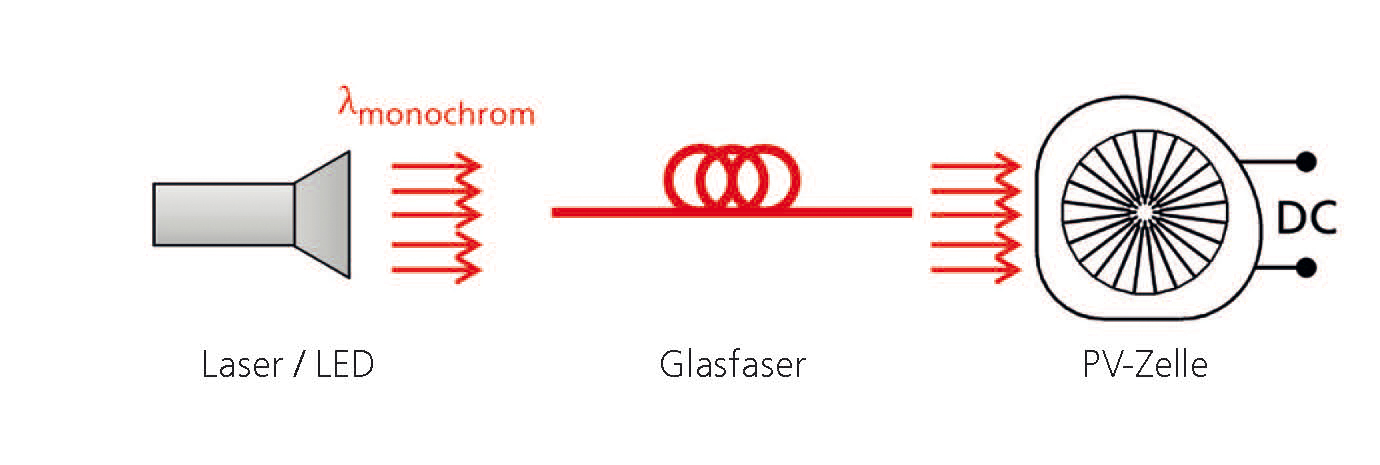| Duration: | July 2012 - October 2015 |
| Contracting Authority/ Sponsors: | Federal Ministry for Economic Affairs and Energy |
| Project Partners: | Karlsruhe Institut of Technology KIT, Institute for Information Processing Technologies ITIV; Karlsruhe Institut of Technology KIT, Institute of Photonics and Quantum Electronics (IPQ); Bosch Rexroth |
| Website: | https://www.itiv.kit.edu/optowind/ |
| Project Focus: |
OPTOWIND – Optically Powered Sensor Networks for Wind Energy



In the “Optowind” project, an optically powered sensor system is developed for condition monitoring and assessment of the rotor blades of wind turbines. The copper wires used in conventional systems of this kind are very susceptible to lightning and the sensor design is also limited. For these reasons, an optically powered sensor system was developed that offers inherent galvanic isolation and thus, interference and lightning protection. Furthermore, the sensor unit can be installed in the tip of the rotor blade. The energy for optical power supply is routed in the form of monochromatic light from the base station in the hub via a fiber-optic light guide to the sensor unit. There, it is converted highly efficiently into electrical power (Fig. 1) using a photovoltaic converter developed at Fraunhofer ISE.
Photovoltaic cells from III-V semiconductors can convert monochromatic light very efficiently into electrical energy. Using gallium arsenide (GaAs)-based photovoltaic cells, which represents a very good absorber material for wavelengths in the range from 800-850 nm, Fraunhofer ISE achieved very high efficiencies of up to 57.4 %. However, cells with conventional cell design provide irradiance-dependent output voltages of only 1.0-1.2 V. This is not sufficient for the electrical supply of the sensor unit.
For this reason, we developed photovoltaic cells with higher output voltage in the “Optowind” project and optimized them for the specific operating conditions in the system. Two photovoltaic cells are serially connected (Fig. 2) at the chip level, which doubles the output voltage to 2.0-2.4 V. Furthermore, we optimized the front metal grid.
To reduce attenuation losses in the optical fiber, higher wavelengths are of interest as well. Here, other absorber materials are required for the photovoltaic converter. The key for high efficiencies is a good matchbetween the bandgap of the absorber material of the photovoltaic cell and the wavelength of the incident light. In the “Optowind” project, photovoltaic cells were realized from the ternary III-V compound semiconductor gallium indium arsenide (GaInAs). They can efficiently convert laser light with a wavelength of 980 nm. For this purpose, we developed a special, so-called metamorphic buffer structure, which compensates for the different lattice constants between substrate and photoactive absorber, which is crucial for realizing high material quality. With the production of a pilot series of 400 cells on standard opto-electronic component sockets (Fig. 3), series production readiness of the developed technology was demonstrated successfully.